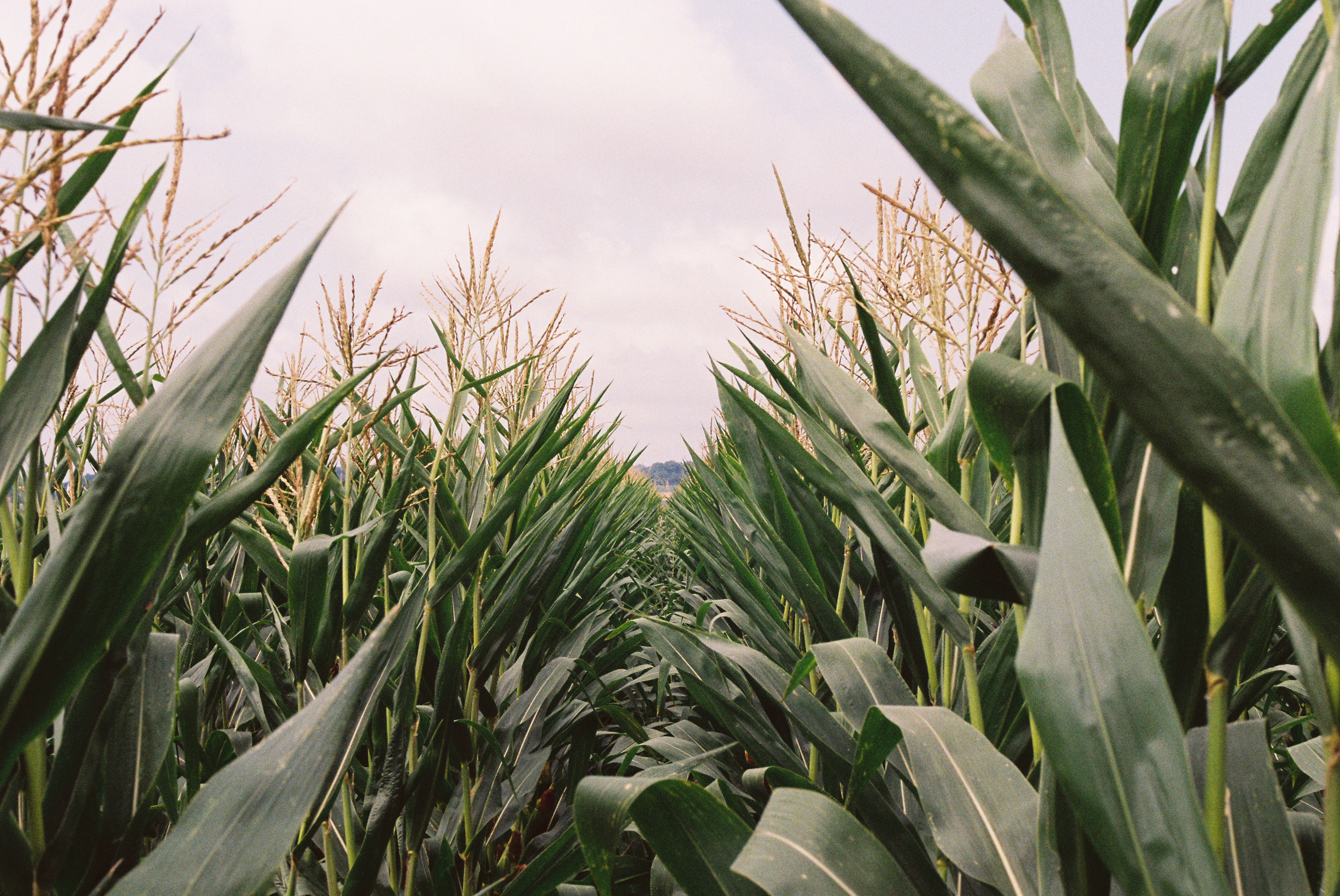Neglected Media, Part 1: Soil and Our Food System
April 16, 2019
Abdel Alfahham
This essay is the first in a four-part series reflecting on the modern American food system. The extent to which the US agricultural system has become a profit-driven, chemically-fed, industrial machine is evident in various ways: mono-cropping dominates the agricultural landscape, fossil fuel-sourced fertilizers are the sole source of necessary crop nutrients, and industrial farmers rely on synthetic pesticides with carcinogenic properties. But urban sustainable agriculture movements also contain the seeds of hope for a more synergistic food system.
This series will thus begin with a focus on the corporate industrialization of food in the mid-twentieth century before turning to inspirational snapshots of a hopeful future, with a focus on urban agriculture in Philadelphia. In the posts to come, artist Hannah Riddle will guide us through a collection of stirring collages exploring America's agricultural landscape through the lens of 1950 – 1970s era National Geographic Magazines; Lila Bhide will introduce the Penn Garden, a student-founded initiative promoting sustainable food production and a shared educational space for Penn and West Philadelphia communities; and Nina Berryman and Alessandro Ascherio from Northwest Philadelphia's Weavers Way Farms will share field-knowledge from their experience at the intersection of urban agriculture, community service, and local stewardship.
Problems of Uniformity and Dependence

Industrial scale monocropping is commonly observed in our agricultural landscape (Photo Credit: Abdel Alfahham)
Artificial optimization, mechanization, and automation touch every corner of the modern American food system. Between the 1940s and 1970s, consumer demand for convenience and continuity led corporate actors to streamline food production without examining social and environmental consequences. Both food producers and consumers have written off the intermingled nature of agricultural production with native ecosystems. This disregard has led to the degradation of soil, the contamination of rivers, and the ecological destabilization of wetlands and bays, alongside severe economic impacts on rural communities.
Despite being the foundational element in the agricultural food production system, soil is the environmental medium with the least social and scientific attention. Monocropping and intensive use of synthetic fertilizer have catastrophically affected the quality and diversity of soil ecosystems and lead to large-scale pollution of waterways. Such industrial farming methods treat the soil like a dead sponge, a physical medium holding seed and absorbing nutrients, and completely overlook the most important agro-ecological and microbiological services that soil provides. Agricultural soils are extremely diverse ecosystems where insects, plants, and microbes interact with organic matter, filtering rainwater, sequestering carbon and supplying nutrients to plants.
"Although the intensification of agriculture has vastly increased productivity, it also has had a number of potentially detrimental environmental consequences, ranging from rapid erosion of fertile topsoils to contamination of drinking water supplies by the chemicals used to enhance farmland productivity."
Modern Agriculture: Its Effects on the Environment
Nancy M. Trautmann, Keith S. Porter, Robert J. Wagenet, Cornell University

Pesticides used on farms have been shown to kill bees (Photo Credit: Abdel Alfahham)
The impacts of industrial agriculture ripple beyond soil, however. Prior to the development of synthetic herbicides, weed removal was done mechanically or through preventative cultural control. Similarly, pest control methods consisted of naturally or biologically derived chemicals such as essential oils. In contrast, industrial agriculture relies on a plethora of novel synthetic pesticides with grave risks to bee populations, water quality, and human health.
" In recent years the costs for fuel and chemicals have increased sharply, the high use of pesticides has led to development of resistance in many pest species, and concern has developed over environmental contamination by fertilizers and pesticides "
Modern Agriculture: Its Effects on the Environment
Nancy M. Trautmann, Keith S. Porter, Robert J. Wagenet, Cornell University
Solutions of Synergy and Regeneration

(Photo Credit: Abdel Alfahham)
Urban farms are at the forefront of the sustainable and local food movements because of their proximity to population centers, and their community-driven emphasis on positive social impact. The independence of urban farms from financial instruments such as commodity markets and their liberation from corporate pressures allow them to adopt and experiment with various progressive social and environmental practices.
As the American urban population grows, regenerative farming can provide the tools that empower communities, bridge the urban-rural divide, and promote harmonious existence within ecosystems. Additionally, urban farms adopt farming practices that improve soil health, such as the application of recycled or composted organic matter for crop nutrients while also increasing urban plant biodiversity. Urban farms can also promote socioeconomic development and community engagement through outreach and education.
The final two posts in this series will offer discussion of the different social, environmental and economic practices implemented by urban farms in Philadelphia. This discussion will help define a reference point for where the food system might be heading while also testing the viability of various sustainable farming practices. These posts are intended to offer individuals working in these spaces an opportunity to share their insightful observations, experience, and knowledge with food consumers and large scale producers.
